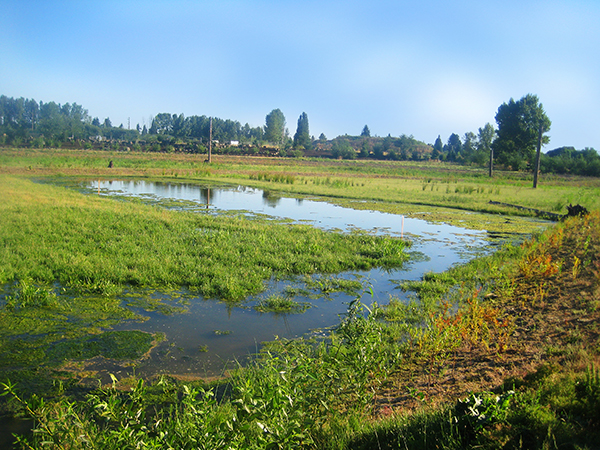
Former sewage lagoons, transformed into treatment wetlands
In providing clean water to more than half million customers in Oregon’s Tualatin River Watershed, Clean Water Services, a water resources management utility, takes an approach that extends well beyond the silos of wastewater, stormwater, and permit requirements to consider the overall needs of the watershed. Their water solutions not only serve people, but the non-human constituents that comprise critical components of the region’s ecology. In the process, they not only improve water quality, but connect people to the ecosystems that surround and support them, and provide new opportunities to enjoy nature.
An example is Fernhill, a 700-acre property owned by Clean Water Services for the management of water resources. Located near the confluence of Gales Creek and the Tualatin River, Fernhill combines a state-of-the-art wastewater treatment facility with a mosaic of riparian wetlands, and a network of public walking trails and spaces. The wetlands, which naturally cool and provide an additional treatment to the water once it is disinfected, add habitat, ecological function, and recreational opportunities. Despite the fact that it is wastewater treatment site, Fernhill Wetlands is beloved by birdwatchers, hikers, and nature lovers. Fernhill Wetlands is an oasis–not only for migratory birds traveling the Pacific Flyway, but for people seeking to immerse themselves in nature and escape the noise and stress of urban life. Biohabitats worked with Clean Water Services to convert three former sewage lagoons into riparian wetlands, and we’re delighted to share this guest blog post by Clean Water Services Deputy General Manager, Diane Taniguchi-Dennis…

Diane Taniguchi-Dennis
The first word uttered by many visitors on tour to Fernhill for the first time is often a heartfelt “Wow!” This reaction is usually followed by a puzzled look when we explain that what they see before them is a natural wastewater treatment system at work. They are puzzled because what they see before them is a lovely, expansive wetland that does not look like a ‘treatment’ system.
The used water from our cities is first treated by a state-of-the-art treatment facility and the cleaned water is disinfected prior to entering into Fernhill Wetlands. Most people understand the purpose of a concrete and steel treatment facility. What they do not always realize is that the treated, sterilized water is actually warm, and has nutrients remaining, and that fish in the Tualatin River require cooler water to survive and flourish.
Fernhill is an “ecological bridge” because it lets nature interact with the treated water before it is released back to the Tualatin River. The wetlands naturally cool the water and cycle the nutrients and other constituents. Fernhill water interacts with the complex organisms in the soil and aquatic plants that are powered by the sun.
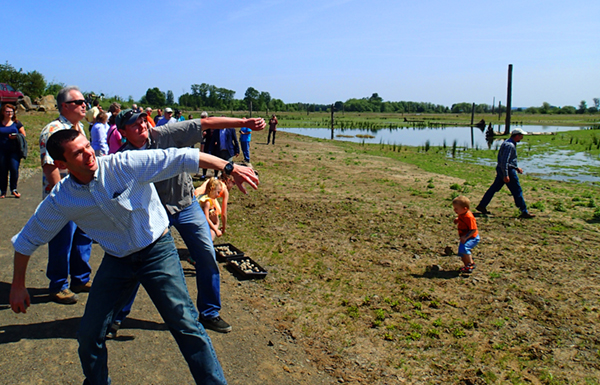
Visitors and staff throw balls of native seeds into the wetlands at an opening ceremony
Nature is also making Fernhill its own space. At full operation, Fernhill will release this naturalized water, along with seeds from native plant species, to the river. Fernhill transforms traditional wastewater treatment into becoming a new, vibrant heartbeat that seeds the river basin with the native plants as it pulses with naturalized water.
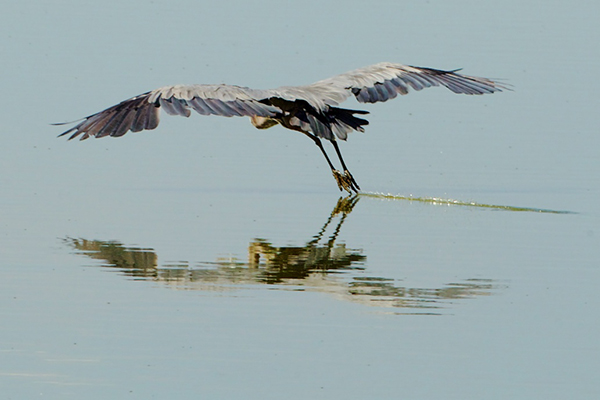
Great Blue Heron (Ardea herodias) at Fernhill Wetlands ©Gary Witt
Everything on the Earth cycles between the land, air, water, and through all life–plants, bugs, bunnies, bees, and ultimately within ourselves. Fernhill Wetlands put the urban water cycle into human context through direct experience to create the understanding that what we put down the drain in our urban area matters to people and to nature. The investments we make as a community in our public infrastructure matter.
And it’s not just about healthy water. It’s about healthy and mindful living.
As we leave our cars in the Fernhill parking lot and begin to walk on the path toward the water garden, our sense of hearing is drawn away from the sounds of a busy city to the peaceful song of birds.
With the crunch of gravel in every step we take, and with each exhale, the stress of the day begins to release itself. Our sense of space and feelings of crowdedness expands at Fernhill in a view framed by a sky blue horizon, mountains, wetlands, and trees. Our attention is distracted from urban life by watching the elegant stillness of blue herons in repose patiently hunting for a fish, or by the bald eagle swooping from great heights to catch its prey invisible to our eyes, or the coordinated lift of hundreds of honking geese from Fernhill Lake, or the dancing flight of a busy dragonfly.
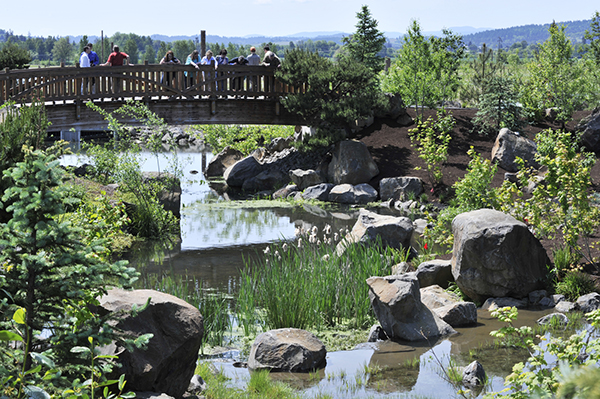
Visitors enjoy the beauty of Fernhill ©Dale Peterson
Fernhill is significant because it quietly speaks to the hearts of people who visit and are delighted to find a space for solace and renewal with nature close to home. Fernhill is a significant outdoor learning space for the children who visit–whether it is to conduct science experiments, create their growing personal list of birds to find and watch, or see the comedic antics of a sandpiper chirping, skipping, and pretending to have a broken wing all the while leading them away from her nest. Fernhill Wetlands is a place of wonder for children, and that wonder comes in many forms, from finding the croaking frog hidden in the wetland, to watching the family of ducks with tiny ducklings swimming all in a row, to discovering fascinating rocks and jingling them their tiny pockets as they walk toward a bridge and anticipate throwing them into the sparkling water.
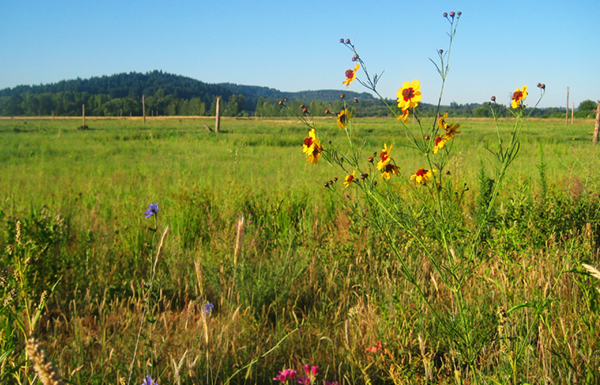
Fernhill wetlands
My peers who visit Fernhill often leave with a renewed sense of purpose for their work in the water industry and the environment. The heart connection they make with nature often inspires them to look for opportunities to create a Fernhill of their own. Fernhill not only makes environmental sense, it is more cost effective than expanding the concrete and steel plant to treat nutrients and temperature, and it creates a space that the public can actively utilize for recreation, to exercise and to reduce stress as they connect with nature.
If you were to ask someone if they thought they’d feel renewed, relaxed, and inspired after visiting a wastewater treatment and water reuse facility, what do you think they would say? If you bring them to Fernhill Wetlands, they may very well say, “Wow.”
Further Reading
Meet Assistant Construction Project Team Leader Bryan SullivanMeet Conservation Biologist Nolan Schillerstrom
Get to know Allyson Gibson, Biohabitats Extern
Get to Know Graphic Designer Joey Marshall
Evolution: A New Leadership Team for Biohabitats
More From This Author
Donating Time to Support and Advance Ecosystem Restoration“I just want to say one word to you. Just one word….plastics.”
Thoughts on Agroecology
Thoughts on Giving Children the Gift of Nature
Get to know Brooke Marshall, Proposal Coordinator

